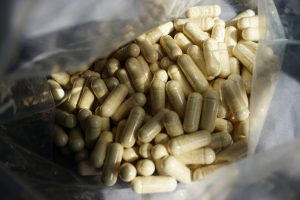Scientists believe that those who suffer from lung disease may suffer more severe symptoms due to a shortage of iron, which could be easily rectified with regular intravenous iron injections.

Iron deficiency is more common in patients with COPD than in those without the lung condition, according to the results of a study published in the BMJ. Its been found that one in five COPD patients has iron deficiency and these patients also suffered from lower oxygen levels, more frequent flare-ups and increased shortness of breath and coughing. Iron-deficiency is traditionally associated automatically with anaemia but iron is essential for many other processes within the body.
“We were really quite surprised how big the differences in oxygen levels were between patients with low iron and those with normal iron levels. The amount of oxygen in the blood is a strong predictor of life expectancy in COPD, so these findings are potentially very significant for patients,” says Professor Peter Robbins from the University of Oxford who led the work.
Levels of C-Reactive Protein are significantly higher in iron-deficient COPD patients, which means inflammation. The inflammation is driving the iron deficiency and the idea that inflammation causes iron deficiency is important. It suggests that other conditions may also result in iron-deficiency caused by inflammation and that other conditions could be treated with iron to help reduce the secondary symptoms caused by a lack of iron. Intravenous iron therapy has been shown to be beneficial in other chronic disease and should be explored as a potential new treatment for COPD patients.
Giving up smoking is the most important thing to do if you have COPD but many patients are still left with troubling symptoms that interfere with their daily lives and can lead to hospital admission. The current treatments target the airways which helps some symptoms but doesn’t improve the patient’s exercise ability and quality of life as much. Iron deficiency seems to act in a variety of ways to worsen the impact of COPD so treating patients with iron can help improve patient’s quality of life, exercise abilities and general symptoms and reduce exacerbations.
There is the counter argument that iron injections would not resolve the problem as the patients usually are not short of iron in their food intake, it is just how the body utilises the iron when suffering from bouts of inflammation that causes the anaemia. Increasing the levels of dietary iron intake will therefore not resolve the issue however perhaps taking iron in the form of a supplemental multivitamin may help.
More research is needed into how best to correct the iron-deficiency and improve the lives of COPD patients.
References: http://www.telegraph.co.uk and http://www.pharmaceutical-journal.com




